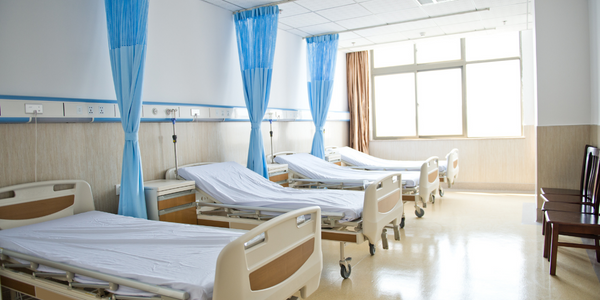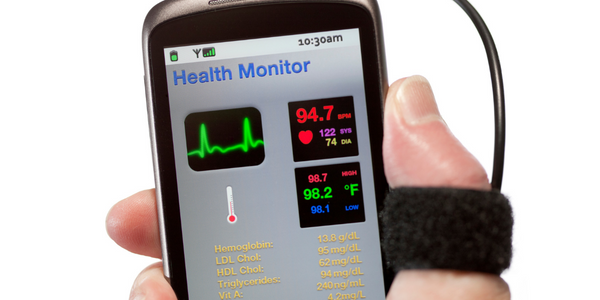Calgary Health Region: Curing Facilities Data Deficiency
Customer Company Size
Large Corporate
Region
- America
Country
- Canada
Product
- ARCHIBUS Real Property & Lease Management
- ARCHIBUS Space Management
- ARCHIBUS Building Operations
- ARCHIBUS Furniture & Equipment Management
- ARCHIBUS Work Wizard
Tech Stack
- Autodesk AutoCAD
- Autodesk Map Guide
Implementation Scale
- Enterprise-wide Deployment
Impact Metrics
- Cost Savings
- Customer Satisfaction
- Productivity Improvements
Technology Category
- Application Infrastructure & Middleware - Data Exchange & Integration
- Functional Applications - Computerized Maintenance Management Systems (CMMS)
- Functional Applications - Enterprise Asset Management Systems (EAM)
Applicable Industries
- Healthcare & Hospitals
Applicable Functions
- Facility Management
- Maintenance
Use Cases
- Asset Health Management (AHM)
- Building Automation & Control
- Building Energy Management
Services
- Software Design & Engineering Services
- System Integration
About The Customer
Calgary Health Region (CHR) is a healthcare provider in Calgary, Alberta, Canada. It manages over 100 facilities, comprising more than 8 million square feet of space, including 12 acute care hospitals with 2,250 beds. The region serves a population of one million residents, both urban and rural, and employs 24,000 staff members and 2,150 physicians. The organization operates with a budget of $2.5 billion. CHR's facilities management was significantly challenged by the Province's mandate to increase the use of computer technology for better management of their facilities portfolios. This led to the adoption of ARCHIBUS to manage their extensive facilities and integrate with their CAD system drawings, resulting in significant operational efficiencies.
The Challenge
The Province of Alberta mandated that the Calgary Health Region (CHR) and other provincial healthcare providers increase the use of computer technology to better manage their facilities portfolios. This directive led to a dramatic expansion of the Calgary Health Region, covering a 15,000 square mile service area with over one million urban and rural dwellers. The challenge was to consolidate data from various autonomous hospitals, each with different planning departments and inconsistent data management practices. Facilities drawings were scattered and inconsistent, with many details committed to vellum, hard copy, spreadsheets, or memory. The lack of a central repository for facilities data and the absence of dedicated computer systems at some sites further complicated the situation.
The Solution
To address the challenge, CHR adopted ARCHIBUS to manage its extensive facilities portfolio. The implementation included several ARCHIBUS applications such as Real Property & Lease Management, Space Management, Building Operations, Furniture & Equipment Management, Work Wizard, and the Overlay for AutoCAD with Design Management application. This comprehensive solution facilitated the integration of CAD and CAFM information, enabling a centralized data repository. With the help of Business Partner BRG, CHR personalized its Space Management and Building Operations applications to incorporate asbestos management data and other specific requirements. The project aimed to improve risk management, reduce litigation, and enhance data-sharing among healthcare units. Additionally, modifications were made to the Building Operations and Furniture & Equipment applications to reflect CHR's maintenance practices and track all building systems equipment and clinical engineering assets.
Operational Impact
Quantitative Benefit

Case Study missing?
Start adding your own!
Register with your work email and create a new case study profile for your business.
Related Case Studies.

Case Study
Hospital Inventory Management
The hospital supply chain team is responsible for ensuring that the right medical supplies are readily available to clinicians when and where needed, and to do so in the most efficient manner possible. However, many of the systems and processes in use at the cancer center for supply chain management were not best suited to support these goals. Barcoding technology, a commonly used method for inventory management of medical supplies, is labor intensive, time consuming, does not provide real-time visibility into inventory levels and can be prone to error. Consequently, the lack of accurate and real-time visibility into inventory levels across multiple supply rooms in multiple hospital facilities creates additional inefficiency in the system causing over-ordering, hoarding, and wasted supplies. Other sources of waste and cost were also identified as candidates for improvement. Existing systems and processes did not provide adequate security for high-cost inventory within the hospital, which was another driver of cost. A lack of visibility into expiration dates for supplies resulted in supplies being wasted due to past expiry dates. Storage of supplies was also a key consideration given the location of the cancer center’s facilities in a dense urban setting, where space is always at a premium. In order to address the challenges outlined above, the hospital sought a solution that would provide real-time inventory information with high levels of accuracy, reduce the level of manual effort required and enable data driven decision making to ensure that the right supplies were readily available to clinicians in the right location at the right time.

Case Study
Gas Pipeline Monitoring System for Hospitals
This system integrator focuses on providing centralized gas pipeline monitoring systems for hospitals. The service they provide makes it possible for hospitals to reduce both maintenance and labor costs. Since hospitals may not have an existing network suitable for this type of system, GPRS communication provides an easy and ready-to-use solution for remote, distributed monitoring systems System Requirements - GPRS communication - Seamless connection with SCADA software - Simple, front-end control capability - Expandable I/O channels - Combine AI, DI, and DO channels

Case Study
Driving Digital Transformations for Vitro Diagnostic Medical Devices
Diagnostic devices play a vital role in helping to improve healthcare delivery. In fact, an estimated 60 percent of the world’s medical decisions are made with support from in vitrodiagnostics (IVD) solutions, such as those provided by Roche Diagnostics, an industry leader. As the demand for medical diagnostic services grows rapidly in hospitals and clinics across China, so does the market for IVD solutions. In addition, the typically high cost of these diagnostic devices means that comprehensive post-sales services are needed. Wanteed to improve three portions of thr IVD:1. Remotely monitor and manage IVD devices as fixed assets.2. Optimizing device availability with predictive maintenance.3. Recommending the best IVD solution for a customer’s needs.

Case Study
HaemoCloud Global Blood Management System
1) Deliver a connected digital product system to protect and increase the differentiated value of Haemonetics blood and plasma solutions. 2) Improve patient outcomes by increasing the efficiency of blood supply flows. 3) Navigate and satisfy a complex web of global regulatory compliance requirements. 4) Reduce costly and labor-intensive maintenance procedures.

Case Study
Cloud-based healthcare solution for Royal Philips
Royal Philips wanted to launch its cloud-based healthcare solution HealthSuite Digital Platform in China to deliver services to help cope with challenges related to urbanization and population growth. Philips wanted to achieve this goal by combining mobile, cloud computing and big data technologies. To bring this platform and product to market, Philips required cloud computing and local technical service capabilities in China, in addition to a flexible IT infrastructure that could handle user requests.







